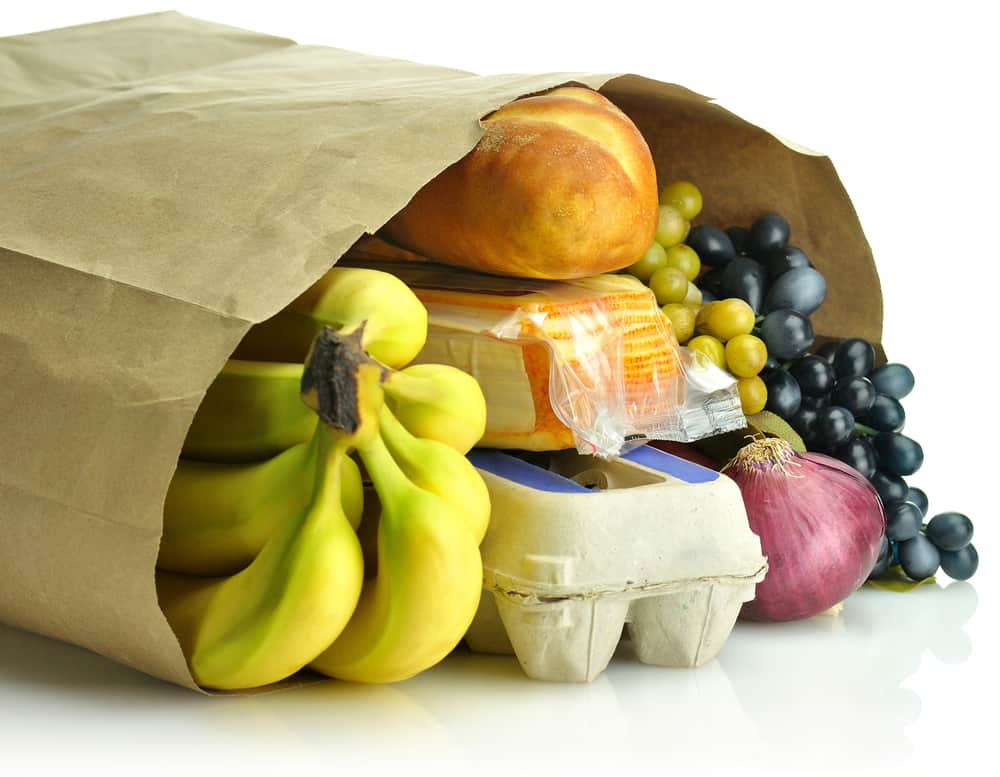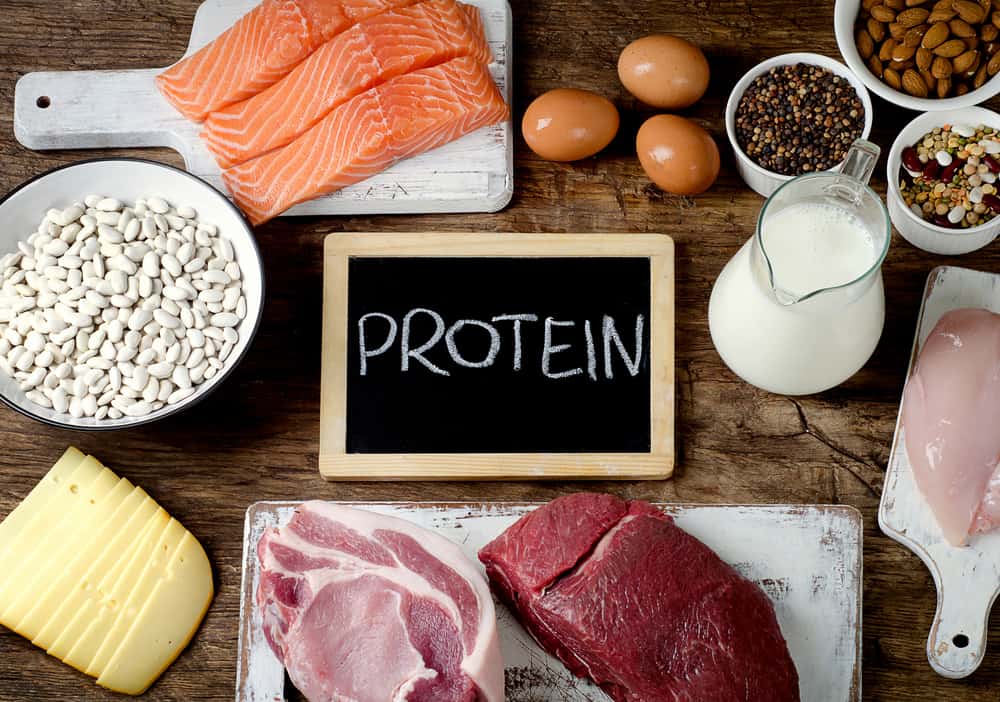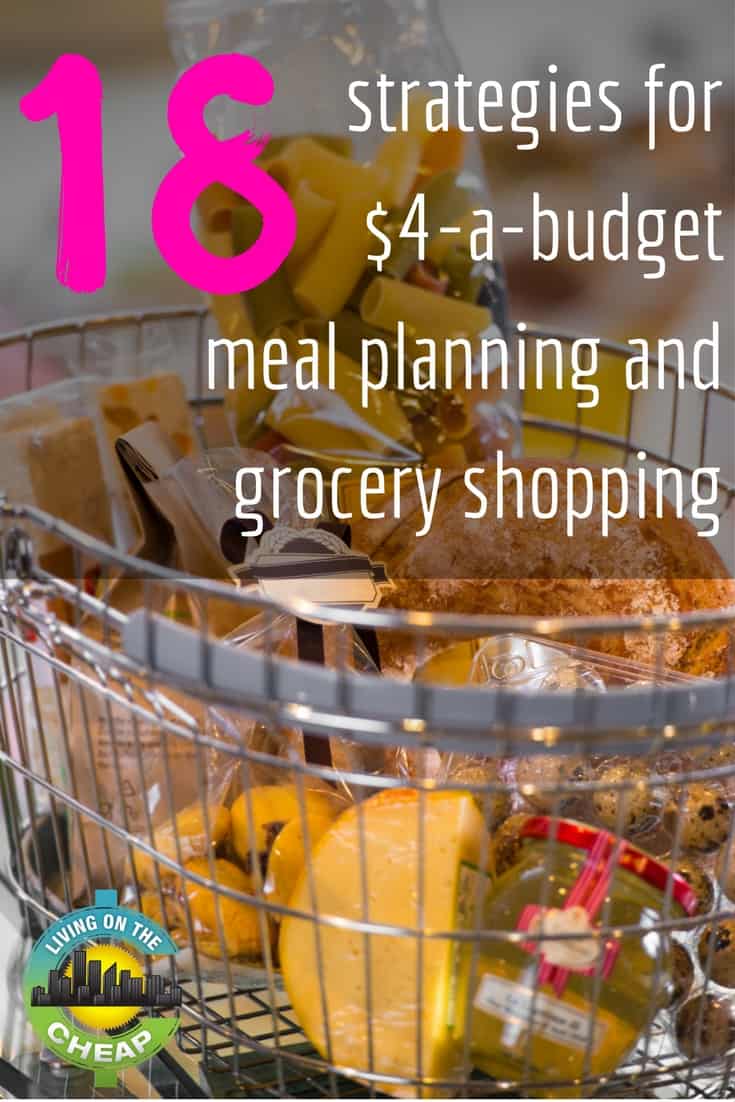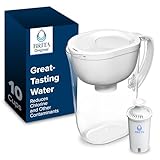The trend for extreme budget meal planning was popularized by Leanne Brown in her free online book Good and Cheap, developed primarily for those using SNAP (food stamp) benefits.
At the time the book was written, the budget was $4 a day. When I heard about the project, I decided to try that budget as a way to save money on groceries.
(Editor’s note: Because of inflation adjustments to the SNAP program, that $4-a-day budget would have to be adjusted to about $10 a day today for one person.; or $32.43 per day for a family of 4.)

Photo: Deposit Photos
Spending only the SNAP maximum was a big change from my previous budget. After the first couple grocery shopping trips, I found there seemed to be several rules to adopt to achieve this goal.
Here are 18 strategies you can use to bring your grocery budget down to the SNAP maximum.
1. Eliminate bottled water
Bottled water is simply an impossible expense in low-budget meal planning. Drink tap water if you have confidence in your municipal source. If you prefer not to use tap water, then buy bulk filtered water; the cheapest source is usually at a station where you fill and haul a container yourself.
Invest in a Brita filtered pitcher for drinking water, or take the savings plunge and look into Berkey filters, which remove fluoride and other ingredients in tap water. Purchase a filter straw for travel.
- The BPA-free Everyday water pitcher with filter holds 10 cups of water, enough to fill 3 24-ounce reusable water bottles; Product reservoir and lid may vary
- Get great-tasting water without the waste; by switching to Brita, you can save money and replace 1,800 single-use plastic water bottles* a year; *16.9 oz water;**Based on IRI data;***vs. tap
- This space efficient Brita pitcher fits perfectly on refrigerator shelves, features an easy-fill locking lid and is easy to pour; Height 10.47"; Width 5.59"; Length/Depth 10.94"; Weight 2.29 pounds
2. Eliminate or greatly reduce consumption of fruit juice
If you think of fruit juice as a sugary, high-calorie beverage, you’ll have an easier time eliminating it from your grocery shopping list.
If starting your day without a glass of O.J. is too traumatic, then try reducing the size of your glass, or drinking juice only on weekends. You could also dilute it with some of that water you just filtered, so the juice lasts longer.
3. Eliminate or greatly reduce consumption of coffee or tea
Coffee and tea are luxuries, but going without a morning “cuppa joe” is a tough habit to break for some. (It was for me!) The cheapest source for your favorite brew is to buy bulk coffee beans or tea leaves, and then limit yourself to one great brewed cup per day.
I sometimes use coffee grounds twice, like they do in Ethiopia, the inventors of coffee, so why not try it?
- SUPER CREMA: A 2.2 lb whole bean coffee bag ideal for espresso preparation
- INTENSITY AND ROAST: This full-bodied medium roast offers a bold and creamy finish
- BLEND: Made from Arabica and Robusta beans, this naturally caffeinated blend is sourced from 15 coffee-growing countries around the world
- Maxwell House Original Roast Ground Coffee, 27.5 oz Canister

Photo: Deposit Photos
4. Eliminate or greatly reduce consumption of alcohol
We used to have a cocktail before dinner, followed by a glass of wine or two with the meal. First, we eliminated one, then both except for weekends or special occasions.
Eventually, I liked the cost savings so much, I stopped routinely purchasing any alcohol at all, except for planned special occasions, such as holiday dinners or entertaining.
5. Eliminate sodas and other sugary drinks
There’s just no room in budget meal planning for empty calories — foods that provide no nutritive value. Instead, add the (well-washed) trimmings from fruits and vegetables to plain water or club soda, with sweetener if you prefer.
Try water infused with zest peeled from citrus fruits (lemon, lime, orange, grapefruit); cucumber peels; tropical fruit rinds (pineapple, mango, papaya, kiwi); melon rinds; celery leaves; tomato seeds; ginger root ends; and easy-to-grow herbs you can plant in your yard (including mint, rosemary and lavender).
Of course, you can use slices of fruits and vegetables, but I like finding a use for things that I might throw away to replace something else I might buy (such as infused water to replace soda, tea or juice).

Photo: Deposit Photos
6. Eat whole fresh fruit only when in season locally
When fresh fruits are out of season, eat frozen, canned or dried fruits — whatever is the most economical purchase at the time. Even if you see a discounted price on out-of-season fruit, beware.
The fruit is often less flavorful than the in-season version or it will go bad more quickly, causing you to waste money on rotten fruit you had to throw out.
7. Rethink snacks and sweets
Crackers, chips, cookies, candy and other treats are costly. Look for other budget-conscious options for treats.
Here are a few that I found possible in a SNAP budget: Popcorn (purchased in bulk) and popped in a saucepan using oil or an air popper; fresh fruit and a few (5-10) nuts; toast with peanut butter (with or without jam, honey or raisins); roasted potatoes with ketchup or ranch dressing; and chopped fruit or raisins stirred into plain yogurt.
Easy homemade desserts such as bar cookies and sheet cakes are another possibility.
- Convenient Popcorn Maker: Pop it like it’s hot; The Dash Fresh Pop Popcorn Maker cooks using only hot air, no oil necessary
- Everything You Need: Enjoy theater-style popcorn with the popcorn machine, measuring cup, and recipe guide
- Butter-Warming Tray: Our included measuring cup doubles as a butter-melting tray for delicious, flavorful popcorn
8. Buy food in bulk
Purchasing bulk foods is very helpful for $10-a-day grocery shopping. If you can shop at a store with bulk food bins, they are usually the most economical price per pound—but not always, so compare prices.
The real advantage of bulk buying is you can afford some relatively expensive foods that might be out of reach in a prepackaged amount, such as a bottle of oil or jar of spices. Bulk bins are also economical sources for many basic foods such as dry beans, whole grains, flours and dried fruits.
Alternatively, if you have access to purchase large packages (for example 25 pound bags of beans or rice, vegetables or fruits by the case, or whole meat cuts such as beef chuck or pork shoulder), then you can realize substantial savings.
Just make sure you aren’t buying more than you can use before the food goes bad, or you will be wasting rather than saving dollars.
9. Change your habits to afford ‘extras’
On such a limited budget, it was challenging to afford many common items including herbs and spices, cooking oil and butter, sugar, jam or honey, and condiments such as ketchup and mayonnaise.
The first month I couldn’t afford most of these items; they seemed like “extras” that were out of reach. I started with a couple of items available in the bulk aisle. For example, just a few tablespoons of salt and oregano, and just two ounces of olive oil.
To avoid the need to use very much oil, I adjusted some of my preparation techniques. I simmered soups, braised or roasted meats, and poached instead of fried eggs and omelets.
I spread only peanut butter or honey on toast and skipped the butter altogether. After a few shopping trips, my stockpile of extra meals in the freezer started to grow, and I could start to purchase a few more “extras” beyond the most basic foods: fruits, vegetables, grains, meats and dairy.
10. Reduce purchases of packaged and prepared foods
I’ve always been a scratch cook and packaged products have never been a big part of my meal preparation routine. But if you are used to convenience or don’t like to cook, this can be a tough change to make.
Any food in a can, jar, box or other package will usually cost more than the raw ingredients. Canned beans cost more than dry. Cut-up fresh carrots cost more than those in a bag or bulk display. Boneless or cut-up chicken costs more than whole. And the list goes on.
The cost increases astronomically the more convenience you buy. Foods such as sauce mixes, canned soups, frozen pizza and prepared dinners are simply unaffordable when limiting your food budget to $10 a day. A few basic recipes for soup, stew, stir-fry and pasta sauce are easy to learn and can greatly reduce your food expenditure.
11. Reduce consumption of meat and poultry
Reducing meat consumption means having a small portion of meat at one meal each day and using other low-cost protein foods or vegetarian dishes for other meals. Here again, soups, stews and many other simple meals and “one pot” dishes are your friend. Think stir-fry, pastas and casseroles, tacos, hearty soups and entrée salads.
If you can’t part with eggs and bacon for breakfast, then by all means have it, but make lunch and dinner vegetarian meals that day. Mix it up any way that suits your lifestyle.
12. Use more low-cost proteins
Good sources of cheap protein include peanuts or almonds and their nut butters, eggs, Greek-style (thick) yogurt, cottage cheese, lentils, beans (especially soybeans, white beans, adzuki, pinto, kidney, black, navy and garbanzo), canned fish (tuna, salmon, sardines, anchovies) and whey protein (especially useful if you drink smoothies regularly).
If you do eat meat, purchase cheaper cuts. They work well in stews, soups and slow-cookers.
- SATISFY SALTY CRAVINGS: Indulge in irresistible peanuts salted to perfection, enhancing their naturally nutty flavor for a satisfying snack experience
- ENJOY CRUNCHY TEXTURE: Experience the premium, crave-worthy crunch of PLANTERS peanuts, expertly roasted and seasoned to deliver the quality you expect
- SNACKS WITH PROTEIN: Each 1oz serving of these PLANTERS nuts foods offers 7g of plant-based protein to keep you energized, with 0g trans fat and cholesterol-free for a great snack choice
13. Buy the most nutritious food per dollar
Compare cost as well as nutrition. Specifically, check the protein and fiber grams. Get as much protein and fiber for your dollar as you can. Use high-protein grains whenever possible, including amaranth, bulgur, hulled barley, buckwheat, kamut, oats, quinoa, spelt and wild rice.
Choose whole grains over refined grains. For example, choose brown over white rice and whole wheat flour over white.

Photo: Deposit Photos
14. Prepare bone-in whole cuts of meats and make bone broth
Bone-in whole cuts of meat are usually the most economical per pound. Buy these cuts, prepare a braised or roasted dish, and then reserve the bones to make a bone broth.
Bone broth helps maximizes the nutrition in every food dollar you spend; its nutritional benefits include calories, protein and minerals. Bone broth is made the same way you would meat or poultry stock, simmered with onion, celery, carrot and an herb bouquet for four to six hours.
For true bone broth, you can eliminate the vegetables, but simmer 24 to 48 hours to extract the most nutrition.
15. Control fresh milk consumption
If you have children in the household, milk can become a significant item in the food budget. There are several ways to deal with this expense. Some families dilute fresh milk with water. We prefer portion control — after one glass, have the kiddos switch to water (not juice or soda).
If you prefer non-dairy milk, consider making homemade nut (almond or cashew) or rice milk. If you make homemade milk, be sure to reclaim any strained solids and add them to hot cereal before cooking for breakfast, or use in some other way, such as in muffins or a pilaf.
Additionally, use fresh milk for drinking only. For cooking and baking, use canned (unsweetened condensed) or reconstituted dry milk.

Photo: Deposit Photos
16. Keep an eye on portion size
If a serving is a half cup, then measure out a half cup. If you have teenagers, this is less practical. But do teach them which foods are more economical (grains and vegetables) and have them fill up on those, while limiting their helping of expensive proteins.
17. Keep an eye on what’s in your stockpiles
If you were to snoop in the refrigerator and cupboards in the average home kitchen you are likely to find shelves full of half-empty condiments and pickles, plus packages of pasta, crackers, cereals, soda pop and so on.
I have found times when I thought there was “nothing to eat,” only to pull seemingly out of thin air a dinner of rice, lentil stew and freshly made apple-raisin chutney.
So don’t allow your cupboards to swell with unused products. Make sure you rotate through everything every few months.
18. Use ingredient variety, not recipe variety
Rather than making 30 different recipes every month (does anyone do that?), develop a few “go to” items, and rotate the ingredients and flavors weekly.
For example, hearty vegetable-bean soup is one of my go-to recipes, but I prepare it several ways: black beans with greens and curry, white beans with tomatoes and oregano, red beans with carrots and cumin, and Chilean (yellow or pinto) beans with squash and corn. So “bean soup” in our house is one of several comfort-food favorites.
Likewise, vegetable mixes for soups, stews, stir-fry or skillet pasta dishes can range from carrots and cabbage to kale and mushrooms, and broccoli and onions or tomatoes and corn — whatever your family prefers that is economical. Fresh vegetable slaws can also be made on a weekly basis for use in tacos, salads and sandwiches.
Toss shredded fresh vegetables with lemon juice or vinegar and salt and they’ll easily keep for a week in the refrigerator. When they start to look a little sad, they can be rinsed and tossed into a soup base.
Bottom line
The first month on a SNAP budget was difficult. It was all I could do to buy basic ingredients (meat, vegetables, beans, potatoes, fruit, milk, cheese). There was nothing left for fairly common needs such as oil and butter, herbs, coffee and snacks, not to mention more luxurious items such as dessert, wine or beer.
But over time, I made double-batches of some dishes, and froze one for the next month, freeing up some budget for “extras.”
You may also become, like me, much more attentive to wasteful habits. Preparing a stock with vegetables I would throw away after simmering and tossing out the heel from the loaf of bread got my attention.
Now that it’s been a few months, I’ve decided to adopt the lifestyle on a permanent basis. While I can afford more, and will certainly splurge occasionally, I’ve greatly enjoyed the changes required by this new mindset.
Eating on a reduced food budget has turned into a boon. We are eating healthier, more well-intentioned and balanced meals. Every morsel counts, nothing is wasted. It’s definitely become a case of less is more.
If you like good food and like to cook, if you enjoy the Zen of preparing fresh vegetables and cooking from scratch, you might embrace the concept more easily.
But if the changes required to adopt a $10-a-day food budget seem too great a challenge, then peruse these ideas and change just a few habits that will most easily help you reduce your grocery shopping dollars, by putting a little more focus on budget meal planning.
If you liked this article you may also be interested in:
- 26 adaptable recipes and menu ideas for $4-a-day budget meal planning
- Customizable grocery shopping list for $4-a-day food budget
- How to get started dehydrating food








You don”t have to give up coffee or tea. At the dollar store, you can get a box of 100 tea bags for $1. That’s one cent per cup. There are also dollar herbs and spices. Nothing elevates inexpensive meats and beans better than seasonings. The dollar store is also a great place to get treats on the cheap.
I also get my tea bags from Dollar Tree. I do find that I have to use 2 of them to get a good cup of tea, but that only makes each cup cost 2 cents. Pasta, 28 oz cans of various tomatoes, 28 oz cans of fruit, 1 1/2 lbs of several types of pasta, 59 oz cans of tomato juice, large container spices, flour tortillas, 2 lb bags dried pintos and many other items that are only there sometimes. Except for the tea, I look for from the US on the products. Also, I never buy sweets or other junk. They have a lot of that and that is a waste of any money spent.
I would like your bean soup recipes!